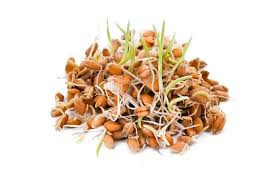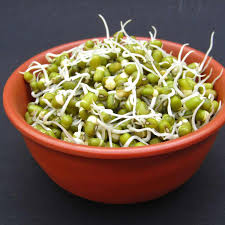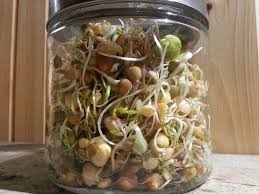During winter, when the garden is dormant and temperatures drop, it’s natural to feel eager to continue growing something, even if the outdoor garden is quiet. Luckily, sprouting seeds indoors offers a perfect solution to keep your green thumb busy while providing fresh, nutritious greens all season long. Not only do they brighten up your meals, but they also grow quickly, offering a steady supply of crunchy, nutrient-packed sprouts for winter salads.
What Are Sprouting Seeds?
Sprouting seeds are seeds that are germinated indoors to produce their first root and shoot. The process is incredibly fast, typically taking between two days to a week. They are the perfect way to add some freshness to your winter diet when outdoor greens are scarce.
Choosing the Right Seeds
Most vegetable or herb seeds can be sprouted, but some are particularly well-suited for this purpose. Common sprouting seeds include alfalfa, sunflower, fenugreek, radish, and various legumes such as mung beans (used for Chinese bean sprouts), lentils, and peas. Each type of sprout offers a unique flavor and texture, making them great for salads, garnishes, or as soup toppings.
To ensure a successful sprout, use seeds specifically sold for sprouting. Seeds meant for outdoor planting may have been treated with chemicals that are harmful to humans. Health food stores often carry sprouting seeds in bulk, making them a cost-effective choice.

Methods of Sprouting Seeds
Once you have your seeds, there are a few ways to sprout them indoors. You can use a simple jar, a specialized sprouting kit, or a sprouting sack. The method you choose depends on how many sprouts you want to grow and how much space you have.
- Jar Method
The jar method is the simplest and works well for small quantities of seeds. Begin by adding one to two tablespoons of seeds to a clean jar, and cover them with water. Let them soak overnight (or up to 24 hours for larger beans), then drain the water. Cover the jar’s mouth with a piece of muslin or cheesecloth, secured with an elastic band, and store the jar upside down at room temperature. Rinse the seeds twice a day with fresh water, draining each time. Keep the jar in a dark place until the sprouts reach your desired length (typically 1-5 cm). Expose them to light for a day or two before eating to enhance their flavor. - Sprouting Kits
Sprouting kits are a step up from jars. These kits feature multiple trays with slats to allow water to drain through. They make rinsing easy and allow for more flexibility, as you can grow different types of sprouts at once. Rinse the entire kit under water, ensuring the water drains through all layers. Keep the seeds in the dark while they germinate and bring them into the light before eating. - Sprouting Sacks
Sprouting sacks, often made of burlap or hessian, provide an alternative for sprouting beans that don’t need light. After soaking the seeds, place them in the sack and dip it in water for one minute, twice a day. Gently move the seeds around in the sack to prevent them from sticking to the fabric. Hang the sack to drain between waterings.
Maximizing Your Sprouts
For thicker sprouts, especially when sprouting beans like mung beans, you can apply pressure to the growing shoots. Place a weight, such as a water-filled sandwich bag or a chopping board, on top of the seeds to encourage them to grow thicker and sturdier.
Harvesting and Storing
Sprouts are best eaten fresh, as they are packed with vitamins and minerals. They can be stored in the fridge for up to a week in a plastic bag. After three days, rinse them again to preserve their freshness and maintain their crunchiness.
Sprouting seeds is a rewarding and educational way to keep growing during the colder months. The process is quick, easy, and provides fresh, home-grown greens to enhance your winter meals. With so many sprouting options, you can have a diverse indoor garden just as varied as your outdoor one, ensuring you enjoy fresh, healthy foods year-round.

